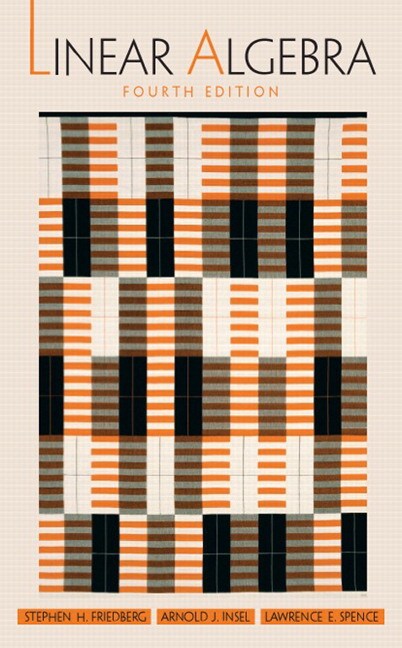Why is Chegg Study better than downloaded Linear Algebra 4th Edition PDF solution manuals? It's easier to figure out tough problems faster using Chegg Study. Unlike static PDF Linear Algebra 4th Edition solution manuals or printed answer keys, our experts show you how to solve each problem step-by-step. No need to wait for office hours or assignments to be graded to find out where you took a wrong turn. You can check your reasoning as you tackle a problem using our interactive solutions viewer. Plus, we regularly update and improve textbook solutions based on student ratings and feedback, so you can be sure you're getting the latest information available. How is Chegg Study better than a printed Linear Algebra 4th Edition student solution manual from the bookstore?
Our interactive player makes it easy to find solutions to Linear Algebra 4th Edition problems you're working on - just go to the chapter for your book. Hit a particularly tricky question? Bookmark it to easily review again before an exam. Windows 10 32 bit download iso kickass.
The best part? As a Chegg Study subscriber, you can view available interactive solutions manuals for each of your classes for one low monthly price. Why buy extra books when you can get all the homework help you need in one place?

Main article: If λ is an eigenvalue of T, then the operator ( T − λI) is not one-to-one, and therefore its inverse ( T − λI) −1 does not exist. The converse is true for finite-dimensional vector spaces, but not for infinite-dimensional vector spaces. In general, the operator ( T − λI) may not have an inverse even if λ is not an eigenvalue. For this reason, in eigenvalues can be generalized to the T as the set of all scalars λ for which the operator ( T − λI) has no inverse. The spectrum of an operator always contains all its eigenvalues but is not limited to them. Associative algebras and representation theory. See also: and The of a (PSD) yields an of eigenvectors, each of which has a nonnegative eigenvalue.
The orthogonal decomposition of a PSD matrix is used in, where the are PSD. This orthogonal decomposition is called (PCA) in statistics. PCA studies among variables. PCA is performed on the or the (in which each variable is scaled to have its equal to one). For the covariance or correlation matrix, the eigenvectors correspond to and the eigenvalues to the by the principal components. Principal component analysis of the correlation matrix provides an for the space of the observed data: In this basis, the largest eigenvalues correspond to the principal components that are associated with most of the covariability among a number of observed data. Principal component analysis is used to study, such as those encountered in, and in.
Linear Algebra Pdf
- Professor: Michael Anshelevich, 326 Milner, manshel@math.tamu.edu, 845–6679 (please use email). Webpage: www.math.tamu.edu/∼manshel/m423/m423.html. Office hours: MTW 11:30–12:30, or by appointment. Textbooks: Friedberg, Insel & Spence, LINEAR ALGEBRA, 4th edition, Pearson Prentice Hall.
- LINEAR ALGEBRA. 4th STEPHEN H.FRIEDBERG, ARNOLD J.INSEL, LAWRENCE E.SPENCE. Exercises Of Chapter 1-4 http: //math.pusan.ac.kr/cafe home/chuh/.

Linear Algebra - Friedberg; Insel; Spence [4th E]. Download as PDF. The primary purpose of this fourth edition of Linear Algebra is to present a careful.
PCA is popular especially in psychology, in the field of. In, the eigenvalues of the correlation matrix determine the Q-methodologist's judgment of practical significance (which differs from the of; cf. More generally, principal component analysis can be used as a method of in. Vibration analysis.